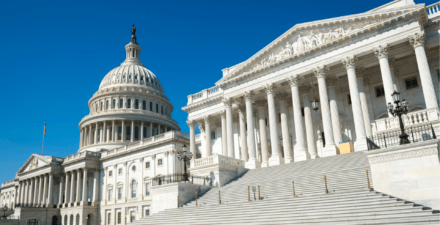What does the research say about the FAMILY Act provisions?

In February 2019, the Family and Medical Insurance Leave Act was reintroduced in the 116th Congress as H.R. 1185/S. 463. Five states have implemented paid leave programs: California (2004), New Jersey (2009), Rhode Island (2014), New York (2018), and Washington state (2020), while Massachusetts, the District of Columbia, Connecticut, and Oregon are all in the process of implementing paid leave programs. This fact sheet examines these existing paid leave programs in light of Congress’ consideration of the FAMILY Act.
Download FileWhat does the research say about the FAMILY Act provisions?
Here is the evidence from the states on the effects of leave-taking:
- The research suggests paid parental leave has a range of positive outcomes for children and parents. One in 10 first-time mothers who work during pregnancy go back to work within the first month of their child’s life. In the absence of paid leave, too many families face an impossible choice between economic security and the health and well-being of their family. A growing body of research suggests that paid parental leave can improve a range of early child outcomes including infant mortality, low birth weight, preterm births, breastfeeding rates, and pediatric head trauma, as well as later-in-life outcomes, including lower rates of attention deficit/hyperactivity disorder, obesity, ear infections, and hearing problems. (Census/Equitable Growth)
- Early research on paid caregiving leave shows a diverse set of positive outcomes for both care recipients and caregivers. A growing body of evidence suggests that caregiving leave supports positive outcomes for care recipients, including mental and physical health outcomes for disabled children with a family caregiver receiving paid leave. Evidence from California suggests that paid caregiving leave reduced nursing home occupancy among the elderly, possibly because enhanced access to family caregivers reduced nursing home stays. Research also suggests positive emotional health outcomes for paid leave for parents of children with special needs, as well as positive emotional and physical health outcomes for family caregivers providing care to aging relatives. (Equitable Growth)
- The demand for paid medical leave is high, and early research findings suggest positive labor market outcomes for those who take it. The vast majority of claims recipients are taking paid leave for their own medical needs. In the first 10 years of California’s program, workers registered more than 9 million medical leave claims, as compared to nearly 1.6 million parental leave claims and 175,198 caregiving claims. A recent study on paid medical leave in Rhode Island suggests that recipients who received paid leave along with vocational rehabilitation services were more likely to return to work and to receive higher wages than those who were not in the program. (Equitable Growth)
- The research to date demonstrates that comprehensive paid family and medical leave has minimal impacts on employers. Data from California find no evidence that employee turnover at firms increases or that wage costs rise when paid leave-taking occurs. In New York, New Jersey, and Rhode Island, two-thirds of employers were supportive of their state’s paid leave programs, and another 15 percent to 20 percent were neutral. (Bedard and Rossin-Slater/Equitable Growth)
Here’s the evidence from the states on who needs leave:
- Research tells us that today’s families include a diverse range of caretaking relationships. In addition to the 3.9 million babies born annually in the United States, nearly 18 million individuals in the United States are family caregivers for an individual over the age of 65 who needs help because of a physical, cognitive, or emotional limitation. For many, parental caregiving responsibilities don’t stop once a baby is old enough to leave with a childcare provider—children with disabilities and/or physical illnesses need care throughout childhood. For instance, more than 16,000 children are diagnosed with cancer in the United States annually; cancer and birth defects are the two most commonly listed reasons for a care claim in California’s program. (American Society of Clinical Oncology)
Here’s the evidence from the states on the length of leave:
- Research suggests that maternity leave entitlements under 1 year can have significant positive impacts for women and children. Leave entitlements under a year can improve job continuity for women and can increase their employment rates and wages several years after childbirth. For instance, extensions in job-protected maternity leave up to 1 year in Canada led to a 22 percent increase in the probability that a mother returned to her prechildbirth employer. The International Labour Organization’s standard for the duration of maternity leave has been 14 weeks since 2000, and 98 out of 185 counties with paid leave policies and available data meet or exceed this standard. (Baker and Milligan/International Labour Organization)
- Data from state programs indicate that recipients only take as much medical leave as their condition warrants, which is typically less than 12 weeks. Medical leave lengths vary depending on the specific needs of the condition, e.g. cancer treatment may require a longer leave than recovery from a broken ankle. (Bedard and Rossin-Slater)
Here’s the evidence from the states on wage replacement:
- Evidence from the states shows that the wage replacement rate can have a dramatic impact on take-up of leave. The introduction of paid leave in California nearly doubled leave-taking rates for new mothers, and those impacts were most substantial for unmarried, minority, and less-educated mothers. Research also suggests that California’s introduction of paid leave boosted fathers’ leave-taking by 46 percent. (Rossin-Slater and others/Baum and Ruhm/California Employment Development Department)
- The least advantaged caregivers are particularly sensitive to wage replacement levels. Evidence suggests that California’s original 55 percent replacement rate was too low for low-income households to participate. (Rossin-Slater and others/Baum and Ruhm/California Employment Development Department)
Here’s the evidence from the states and Great Britain on job protection:
- The evidence suggests that job-protected leave may have positive impacts on women’s labor market outcomes. Job protection and wage replacement work together to promote both short- and long-term employment outcomes for mothers. The expansion of job protection for maternity leave in Great Britain finds that job protection had even stronger impacts than wage replacement on long-run maternal employment rates and job tenure, while wage replacement had stronger effects in the short run. The study, however, also finds that the introduction of job protection for maternity leave may have had negative impacts for mothers on other measures of career success such as promotions to managerial positions. It is important to note that the British case examined the expansion of a maternity leave-only policy, rather than a broader paid family and medical leave policy that would extend job protections to all categories of care leave. The impacts of broader job-protected leave may look quite different in the case of the FAMILY Act, which simply extends FMLA’s broad job protections to apply to paid parental, medical, and caregiving leave. (Stearns)
This fact sheet summarizes evidence from the research literature to discuss key provisions of the FAMILY Act.






